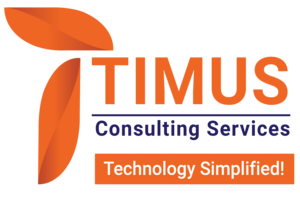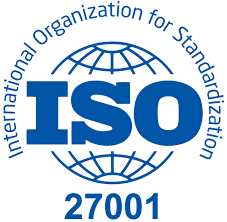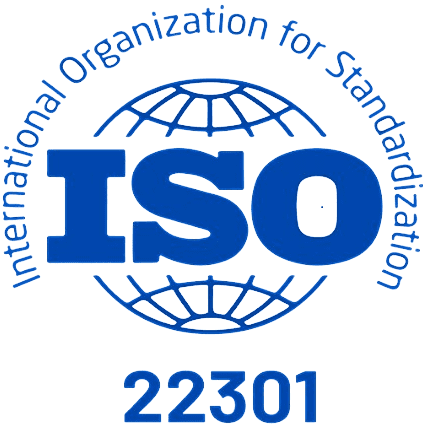In today’s digital world, data privacy has evolved from a mere compliance checkbox to a strategic business imperative. With growing regulatory frameworks like GDPR, CCPA, and others, businesses must shift from reactive compliance to proactive integration of data privacy into every level of their operations. Here’s how organizations can embed data privacy seamlessly into their practices, fostering trust and mitigating risks.
1. Prioritize Data Privacy by Design
One of the foundational principles of modern privacy regulations, such as GDPR, is Privacy by Design. This means embedding data protection measures into the design and architecture of IT systems, rather than treating privacy as an afterthought. Businesses should:
- Build privacy safeguards into software development processes.
- Conduct privacy impact assessments (PIAs) early and throughout system changes.
- Adopt anonymization and encryption practices at the core of data management.
2. Empower Employees Through Training
Your employees are often the first line of defense when it comes to safeguarding customer data. Training programs should:
- Educate employees about data privacy regulations and best practices.
- Clarify the consequences of data breaches and the steps to prevent them.
- Encourage a culture of privacy and responsibility, empowering employees to report potential risks.
A workforce that is well-versed in data privacy is critical to maintaining compliance and protecting sensitive information.
3. Implement Strong Data Governance Policies
Effective data governance ensures that the correct policies and procedures are in place to manage data responsibly across its lifecycle. This includes:
- Defining data ownership and accountability at various levels.
- Limiting data access based on roles and responsibilities.
- Regularly reviewing data collection, storage, and sharing practices to align with privacy regulations.
- Establishing a data retention policy that ensures data is not held longer than necessary.
Good data governance provides transparency, reduces risk, and ensures the consistent application of privacy practices.
4. Embed Privacy in Third-Party Vendor Relationships
Data privacy doesn’t stop at your organization’s doorstep. Many companies rely on third-party vendors to process and manage data. To mitigate the risk of third-party breaches:
- Conduct thorough due diligence when selecting vendors, ensuring they have adequate data protection measures in place.
- Include data privacy clauses in contracts that hold vendors accountable for safeguarding information.
- Regularly audit and monitor vendors for ongoing compliance with privacy requirements.
A vendor management process that integrates data privacy considerations is crucial to maintaining a strong privacy posture.
5. Use Data Minimization Techniques
Less is more when it comes to data collection. Collecting and storing more data than necessary increases your risk profile. A core tenet of data privacy is data minimization, which involves:
- Collecting only the data necessary for the intended purpose.
- Reviewing and purging unnecessary data regularly.
- Limiting the amount of sensitive data processed whenever possible.
This approach reduces the potential for breaches and limits the fallout should an incident occur.
6. Leverage Privacy-Enabling Technologies
Advances in technology offer businesses new tools to help embed data privacy into their operations. Key technologies to consider include:
- Encryption: Protects data at rest and in transit, ensuring that unauthorized parties cannot access it.
- Data masking: Obscures sensitive information so that unauthorized users can’t see it in raw form.
- Automated compliance tools: Monitor for potential violations and ensure adherence to privacy regulations.
- Blockchain: Promises greater data transparency, security, and traceability.
Using these technologies helps protect data throughout its lifecycle while also demonstrating your commitment to privacy.
7. Establish Incident Response Plans
Despite your best efforts, data breaches may still occur. To mitigate the damage and respond effectively:
- Develop a comprehensive incident response plan that outlines how to identify, contain, and address breaches.
- Designate a cross-functional response team, including legal, IT, and public relations.
- Ensure compliance with breach notification laws by informing regulators and affected individuals promptly.
Having a well-rehearsed plan ensures that your organization can respond swiftly and minimize potential damage.
8. Continuous Monitoring and Auditing
Data privacy is not a one-and-done process. To maintain compliance and mitigate evolving risks, organizations should:
- Conduct regular audits of their data privacy practices.
- Monitor for any changes in privacy regulations and adjust policies accordingly.
- Use automated tools to track and report on compliance metrics.
A culture of continuous improvement helps maintain the integrity of your data privacy program and ensures long-term success.
Conclusion: Data Privacy as a Strategic Advantage
Embedding data privacy into business operations goes beyond compliance. It builds trust with customers, enhances reputation, and mitigates risks. By making privacy a priority—through design, governance, and training—companies can not only comply with regulations but also set themselves apart in today’s data-driven world. The more proactive your approach, the better equipped you’ll be to handle the complex and evolving landscape of data privacy.
About us
We are Timus Consulting Services, a fast-growing, premium Governance, Risk, and compliance (GRC) consulting firm, with a specialization in theGRC implementation, customization, and support.
Our team has consolidated experience of more than 15 years working with financial majors across the globe. Our team is comprised of experienced GRC and technology professionals that have an average of 10 years of experience. Our services include:
- GRC implementation, enhancement, customization, Development / Delivery
- GRC Training
- GRC maintenance, and Support
- GRC staff augmentation
Our team
Our team (consultants in their previous roles) have worked on some of the major OpenPages projects for fortune 500 clients across the globe. Over the past year, we have experienced rapid growth and as of now we have a team of 15+ experienced and fully certified OpenPages consultants, OpenPages QA and OpenPages lead/architects at all experience levels.
Our key strengths:
Our expertise lies in covering the length and breadth of the IBM OpenPages GRC platform. We specialize in:
- Expert business consulting in GRC domain including use cases like Operational Risk Management, Internal Audit Management, Third party risk management, IT Governance amongst others
- OpenPages GRC platform customization and third-party integration
- Building custom business solutions on OpenPages GRC platform
Connect with us:
Feel free to reach out to us for any of your GRC requirements.
Email: [email protected]
Phone: +91 9665833224
WhatsApp: +44 7424222412
Website: www.Timusconsulting.com





